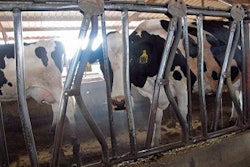This is part two of a two-part piece. Part one can be found here.
Ingredient Feeding
Each ingredient must be metered into the continuous blender at a controlled rate. These individual systems will consist of a device to control the rate, or a feeder, with a reservoir of powder above. The effectiveness and accuracy of these systems will have the greatest influence on the success of a continuous blender. Unlike batch operations, these systems must not only be accurate, but they must also maintain that accuracy over relatively short time periods. This accuracy must cover all aspects of powder feed, including instantaneous discharge rate into the blender, material consistency and reliability.
Feed rate accuracy is primarily a function of the equipment itself. In batch blending operations, all that is required to achieve a consistent, average composition (at least from the perspective of dispensing) is an accurate scale and tarring of the container used to deliver ingredient powder to the blending room. However, for continuous blending systems the accuracy comes from continuous scale measurements and calculations of feed rate. Generally for these systems, feed hoppers or bins will be mounted on load cells, and they will use variable speed powder feeders (screw feeders, rotary valves or vibratory pan feeders) to maintain a predefined discharge rate from the vessel into the beginning of the continuous blender (see Figure 2). The monitoring of each vessel’s contents and the calculation of discharge rate must consider the required variability. As an example, this means that the feeder cannot control to an average rate calculated over a 1 minute interval, while allowing wider variations over a 10 sec interval, if these smaller variations would impart step changes in blend composition that the blender could not recover from, given the powder residence time and blending behavior. Typically these feed systems will have complex control schemes to make these rate calculations and adjust the feeder speed, the details of which need to be understood relative to this time-dependent requirement for accuracy.
Figure 2: Ingredient feed into a continuous
blending screw.
Material consistency is also a concern, from the standpoint of variations that may affect the final product’s uniformity. For instance, preblends can sometimes be used to dilute an API to help in achieving the required accuracy and ease of flow. Such a preblend would likely be prepared in a batch blender of some form. However, as a dry blend it may be prone to the effects of segregation. In fact, these same concerns can arise for an individual ingredient, should changes in particle size distribution alone result in downstream processing concerns (compression performance at tableting, dissolution, etc.). Segregation can occur by a number of mechanisms (see Figure 3), and is generally tied to transfer processes such as the discharge of a blender into a container, or the initial filling of a drum or feed system. Understanding the potential of a powder to segregate by one mechanism or another is critical for determining the importance and influence of various features of a handling system [3]. Examples of such features include chute height, flow rate, discharge flow pattern (mass flow vs. funnel flow), and air handling (venting). Without the required level of control, the powder discharge and flow sequences of a preblend leading from the blender and into the feed hopper could result in variations in particle size and/or composition. These variations would not matter if the entire quantity was being fed into a larger batch blending process all at once; however, being fed into a continuous blending process means any such variations will equate to changes over time. The time interval for such changes will likely be relatively large, such that the continuous blender would not be able to “recover”.
Maintaining reliable powder flow of each ingredient to a continuous blending system is essential for its performance. Flow stoppages due to arching and ratholing within ingredient feed hoppers and bins are more than just a nuisance, since these problems will directly contribute to the composition of the final blend for a period of time. Any such interruptions will most likely result in material that cannot be reworked, and may call into question the acceptability of the remaining product run. Flow problems such as flooding and variations in bulk density can also affect feeder performance, even if a complete stoppage does not occur. As a result, flow performance must be assessed, and the feed systems selected to ensure reliable handling. The design requirement for each feed hopper must be considered in light of the application and the flow properties of the material [4].
Figure 3: Sifting segregation.
An additional concern can arise with the placement of ingredient feeders directing powders into a continuous blending system. The order of addition can be critical, in terms of achieving the desired uniformity. Typically high percentage excipients will be fed into the system first, with smaller additions added later. This ensures the API will be well dispersed in the excipients, while minimizing the risks of particle clumping and material loss due to buildup on equipment surfaces. Additionally, the order of addition may have an effect on the resulting distribution of the API by particle size. If the API particles have the potential to stick to carrier excipient particles, then the API should be added immediately following the excipient most representative of the final blend. A uniform distribution over a range of excipient particle sizes is desired, as this will help minimize the potential for segregation while ensuring API is not lost by dusting.
Assessing Performance
Once a continuous blending system is up and running, sampling should be used to gage its performance. Thief sampling could be used to collect material at regular intervals from the discharge area of the blender, but this type device can result in errors and questions regarding the recovery process. Full stream samples could be recovered after discharge from the blender and prior to dose formation in downstream equipment. However, the complexity of the sampling mechanism and the potential need of subdivision for analysis can make this a difficult approach. Given its mode of operation, a continuous blending system can more easily be assessed through final product sampling. A stratified sampling plan should be used to evaluate within location variation vs. between location variation, since these components can indicate different measures of process capability or material uniformity [5]. Traditional analytical tools can be employed, as can more modern PAT measurement devices. Special attention should be paid to beginning and end of run material, as well as refill cycles of ingredient feed hoppers, ensuring that “steady-state” conditions have been reached and are being maintained.
Conclusion
Continuous blending processes have been used for years in other industries, and a recent push to adopt them in pharmaceutical product manufacturing can give rise to questions regarding implementation. To be effective, these processes must provide the proper blending mechanism to ensure good distribution of the various ingredient particles. Blender features must be selected to provide adequate residence time and the ability to smooth out powder feed variations to an acceptable level for the final product dose size. The ingredient feed systems must provide accurate rate control over a relevant time period, consistent powder properties over the course of feeder discharge, and reliable flow that maintains the intended formulation. If these conditions are met, batch blending can become a thing of the past, allowing pharmaceutical products to be manufactured in statistically controlled environments that rival continuous processes in other industries.
References
1. Product Quality Research Institute (PQRI) Blend Uniformity Working Group (BUWG), The Use of Stratified Sampling of Blend Dosage Units to Demonstrate Adequacy of Mix for Powder Blends, PDA Journal of Pharmaceutical Science and Technology, March/April 2003, Vol. 57, No. 2, pp. 64-74.
2. Clement, S. A. and Prescott, J. K., Blending, Segregation, and Sampling, Encapsulated and Powdered Foods, Food Sciences and Technology Series Vol. 146, 2005.
3. Prescott, J. K. and Hossfeld, R. J., Maintaining product uniformity and uninterrupted flow to direct compression tablet presses. Pharmaceutical Technology, June 1994, pp. 99-114.
4. Barnum R.A., Ebb and Flow – Understanding Powder Flow Behavior, Pharmaceutical Processing, March 2009, pp. 18-21.
5. The PQRI BUWG (includes Prescott, J. K.): The Use of Stratified Sampling of Blend Dosage Units to Demonstrate Adequacy of Mix for Powder Blends, PDA Journal of Pharmaceutical Science and Technology, March/April 2003, Vol. 57, No. 2, pp. 64-74.
For more information, please visit www.jenike.com.























